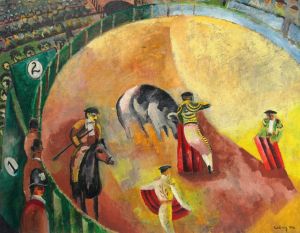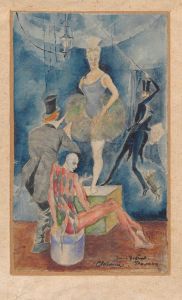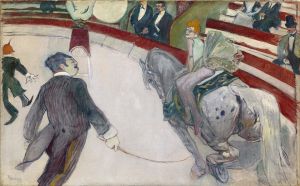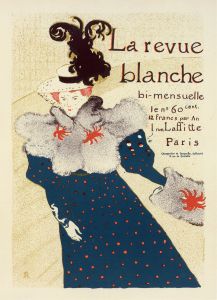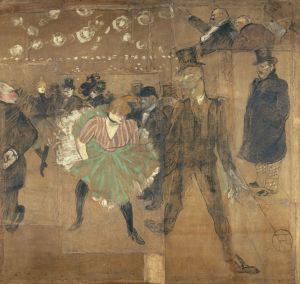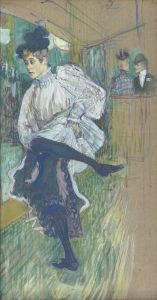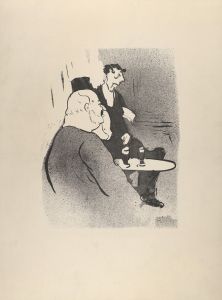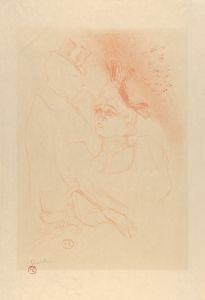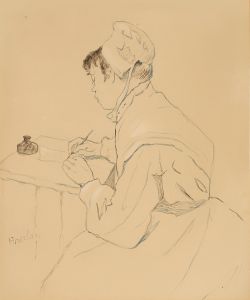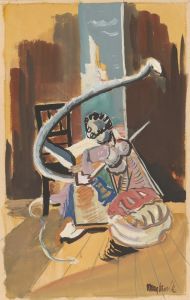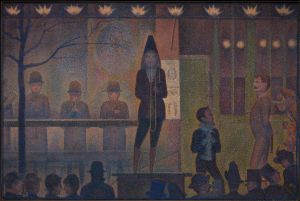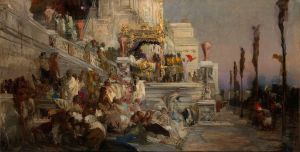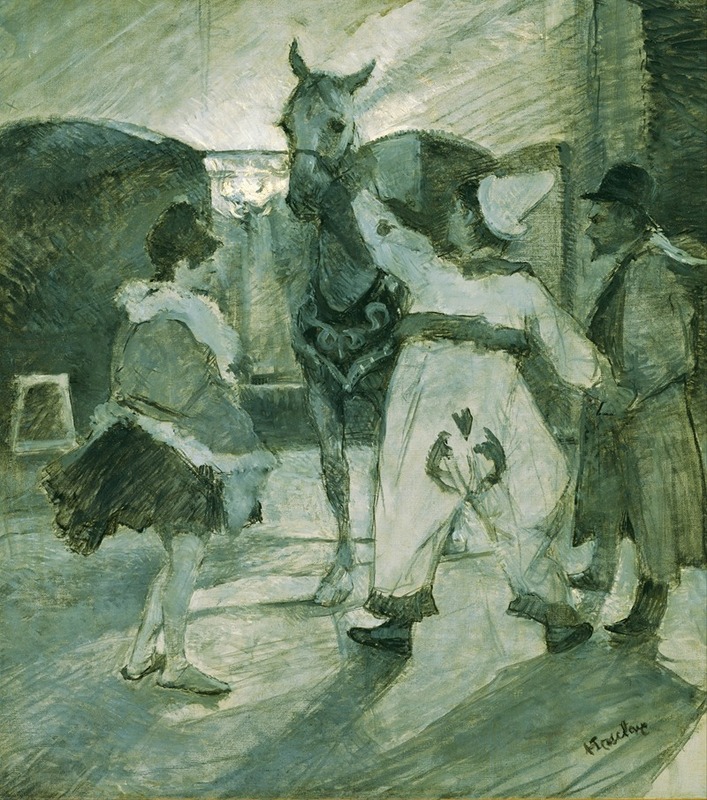
In the Wings at the Circus
A hand-painted replica of Henri de Toulouse-Lautrec’s masterpiece In the Wings at the Circus, meticulously crafted by professional artists to capture the true essence of the original. Each piece is created with museum-quality canvas and rare mineral pigments, carefully painted by experienced artists with delicate brushstrokes and rich, layered colors to perfectly recreate the texture of the original artwork. Unlike machine-printed reproductions, this hand-painted version brings the painting to life, infused with the artist’s emotions and skill in every stroke. Whether for personal collection or home decoration, it instantly elevates the artistic atmosphere of any space.
Henri de Toulouse-Lautrec, a prominent French painter and illustrator, is renowned for his vivid depictions of Parisian nightlife in the late 19th century. One of his lesser-known works, "In the Wings at the Circus," captures the behind-the-scenes atmosphere of a circus, a subject that fascinated the artist throughout his career. Toulouse-Lautrec's interest in the circus was part of a broader fascination with entertainment venues, which also included cabarets, theaters, and dance halls.
"In the Wings at the Circus" is a testament to Toulouse-Lautrec's unique ability to capture the essence of performance and the performers themselves. The painting is characterized by its dynamic composition and the use of bold colors, which were typical of Toulouse-Lautrec's style. His work often focused on the human figure, and this painting is no exception, as it highlights the performers in a moment of anticipation before they take the stage.
Toulouse-Lautrec was known for his keen observational skills and his ability to convey the personalities and emotions of his subjects. In this painting, he captures the tension and excitement that pervade the moments before a performance. The figures are depicted with a sense of immediacy and movement, reflecting the artist's interest in the fleeting nature of performance and the ephemeral world of the circus.
The setting of the circus provided Toulouse-Lautrec with a rich tapestry of characters and scenes to explore. He was particularly drawn to the performers, who often lived on the fringes of society, much like the bohemian circles he frequented in Paris. This affinity is evident in the empathetic way he portrays the circus artists, capturing both their physicality and their emotional states.
Toulouse-Lautrec's work is often associated with the Post-Impressionist movement, and "In the Wings at the Circus" exemplifies many of the characteristics of this style. The painting's composition is carefully constructed, with a focus on line and form, and the use of color is both expressive and symbolic. Toulouse-Lautrec's technique involved applying paint in a manner that emphasized texture and depth, creating a vivid sense of space and atmosphere.
The artist's fascination with the circus was not merely an artistic interest; it also reflected his own experiences and challenges. Toulouse-Lautrec, who suffered from a genetic disorder that affected his growth and health, often felt like an outsider in society. This personal connection to the marginalized performers of the circus may have informed his sympathetic and nuanced portrayal of them.
"In the Wings at the Circus" is a compelling example of Toulouse-Lautrec's ability to capture the vibrancy and complexity of the world around him. Through his art, he offered a glimpse into the lives of those who entertained and captivated audiences, revealing both the glamour and the grit of the performance world. This painting, like many of his works, continues to resonate with viewers, offering insights into the human condition and the transformative power of art.





